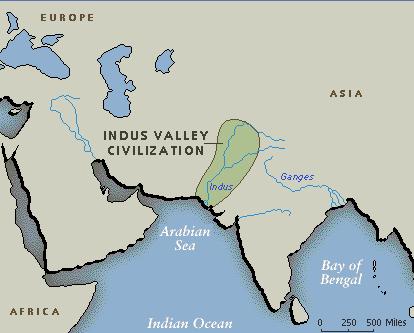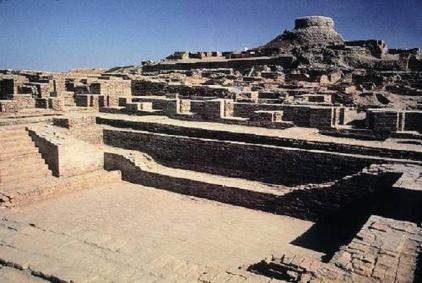How to install the app on iOS
Follow along with the video below to see how to install our site as a web app on your home screen.
Note: This feature may not be available in some browsers.
You are using an out of date browser. It may not display this or other websites correctly.
You should upgrade or use an alternative browser.
You should upgrade or use an alternative browser.
The number zero was invented in Ancient Pakistan
- Thread starter roadrunner
- Start date
- Status
- Not open for further replies.
Yeti
BANNED

- Joined
- Nov 26, 2010
- Messages
- 7,400
- Reaction score
- -7
- Country
- Location
"India was the mother of our race and Sanskrit the mother of Europe's languages. She was the mother of our philosophy, mother through the Arabs, of much of our mathematics, mother through Buddha, of the ideals embodied in Christianity, mother through village communities of self-government and democracy. Mother India is in many ways the mother of us all."
Will Durant
Obama flattered them by recalling India's
historic achievements in science, philosophy and the invention of the digit "zero". whoohhhhh
Will Durant
Obama flattered them by recalling India's
historic achievements in science, philosophy and the invention of the digit "zero". whoohhhhh
Rafi
ELITE MEMBER

- Joined
- Jul 23, 2010
- Messages
- 11,752
- Reaction score
- 13
- Country
- Location
You do know the Indus valley civilisation has parts both in modern day Pakistan and India? like states such as Gujarat so how can you say India or Bharat has no connection?
---------- Post added at 04:22 PM ---------- Previous post was at 04:21 PM ----------
Umm no hes talking about the Gupta's and he said India not Pakistan
There are two distinct realities, which in fact are civilizations, there is the Indus ie Ancient Pakistan, and their is bharat - and the achievements of those belong to their geographic boundaries.
The fact is the monument of Ancient Egypt belong to Egypt, and not to Sudan, even though at some point it was part of the Egyptian empire.
Our right to our land, is infinite -

Rafi
ELITE MEMBER

- Joined
- Jul 23, 2010
- Messages
- 11,752
- Reaction score
- 13
- Country
- Location
"India was the mother of our race and Sanskrit the mother of Europe's languages. She was the mother of our philosophy, mother through the Arabs, of much of our mathematics, mother through Buddha, of the ideals embodied in Christianity, mother through village communities of self-government and democracy. Mother India is in many ways the mother of us all."
Will Durant
Obama flattered them by recalling India's
historic achievements in science, philosophy and the invention of the digit "zero". whoohhhhh
Hahaha
 and you need a Yank to tell you, your self worth.
and you need a Yank to tell you, your self worth.Yeti
BANNED

- Joined
- Nov 26, 2010
- Messages
- 7,400
- Reaction score
- -7
- Country
- Location
Hahahaand you need a Yank to tell you, your self worth.
No but you think Indus is only in Pakistan or you made Zero

Signs of desperation stealing other peoples inventions and passing them as your own.
Rafi
ELITE MEMBER

- Joined
- Jul 23, 2010
- Messages
- 11,752
- Reaction score
- 13
- Country
- Location

Lothal in Gujarat
The main cities and monuments are in Pakistan, guess why the Roman Empire is named after Rome, even though their empire was spread, at most it was just a copy, and the least it was not part of the IVC.

Rafi
ELITE MEMBER

- Joined
- Jul 23, 2010
- Messages
- 11,752
- Reaction score
- 13
- Country
- Location
Now look at this - it is not a set of small walls, or huts, this is Mohenjodaro a massive sophisticated city with 10's of thousands of inhabitants - in fact the first city in the world, part of Ancient Pakistan

Yeti
BANNED

- Joined
- Nov 26, 2010
- Messages
- 7,400
- Reaction score
- -7
- Country
- Location
Lothal (Gujarati: લોથલ loˑt̪ʰəl) is one of the most prominent cities of the ancient Indus valley civilization. Located in Bhāl region of the modern state of Gujarāt and dating from 2400 BCE, it is one of India's most important archaeological sites that date from that era. Discovered in 1954, Lothal was excavated from February 13, 1955 to May 19, 1960 by the Archaeological Survey of India (ASI).
Lothal's dock—the world's earliest known—connected the city to an ancient course of the Sabarmati river on the trade route between Harappan cities in Sindh and the peninsula of Saurashtra when the surrounding Kutch desert of today was a part of the Arabian Sea. It was a vital and thriving trade centre in ancient times, with its trade of beads, gems and valuable ornaments reaching the far corners of West Asia and Africa. Lothal's people were responsible for the earliest-known portrayals of realism in art and sculpture, telling some of the most well-known fables of today. Its scientists used a shell compass and divided the horizon and sky into 8–12 whole parts, possibly pioneering the study of stars and advanced navigation—2000 years before the Greeks. The techniques and tools they pioneered for bead-making and in metallurgy have stood the test of time for over 4000 years.
Lothal's dock—the world's earliest known—connected the city to an ancient course of the Sabarmati river on the trade route between Harappan cities in Sindh and the peninsula of Saurashtra when the surrounding Kutch desert of today was a part of the Arabian Sea. It was a vital and thriving trade centre in ancient times, with its trade of beads, gems and valuable ornaments reaching the far corners of West Asia and Africa. Lothal's people were responsible for the earliest-known portrayals of realism in art and sculpture, telling some of the most well-known fables of today. Its scientists used a shell compass and divided the horizon and sky into 8–12 whole parts, possibly pioneering the study of stars and advanced navigation—2000 years before the Greeks. The techniques and tools they pioneered for bead-making and in metallurgy have stood the test of time for over 4000 years.
Rafi
ELITE MEMBER

- Joined
- Jul 23, 2010
- Messages
- 11,752
- Reaction score
- 13
- Country
- Location
Lothal (Gujarati: લોથલ loˑt̪ʰəl) is one of the most prominent cities of the ancient Indus valley civilization. Located in Bhāl region of the modern state of Gujarāt and dating from 2400 BCE, it is one of India's most important archaeological sites that date from that era. Discovered in 1954, Lothal was excavated from February 13, 1955 to May 19, 1960 by the Archaeological Survey of India (ASI).
Lothal's dockthe world's earliest knownconnected the city to an ancient course of the Sabarmati river on the trade route between Harappan cities in Sindh and the peninsula of Saurashtra when the surrounding Kutch desert of today was a part of the Arabian Sea. It was a vital and thriving trade centre in ancient times, with its trade of beads, gems and valuable ornaments reaching the far corners of West Asia and Africa. Lothal's people were responsible for the earliest-known portrayals of realism in art and sculpture, telling some of the most well-known fables of today. Its scientists used a shell compass and divided the horizon and sky into 812 whole parts, possibly pioneering the study of stars and advanced navigation2000 years before the Greeks. The techniques and tools they pioneered for bead-making and in metallurgy have stood the test of time for over 4000 years.
It was not a main site, it was relatively small, the main cities of the IVC are along the river Indus, that is why it is called the IVC.


- Status
- Not open for further replies.
Similar threads
- Replies
- 3
- Views
- 710
- Replies
- 0
- Views
- 643
- Replies
- 5
- Views
- 560






